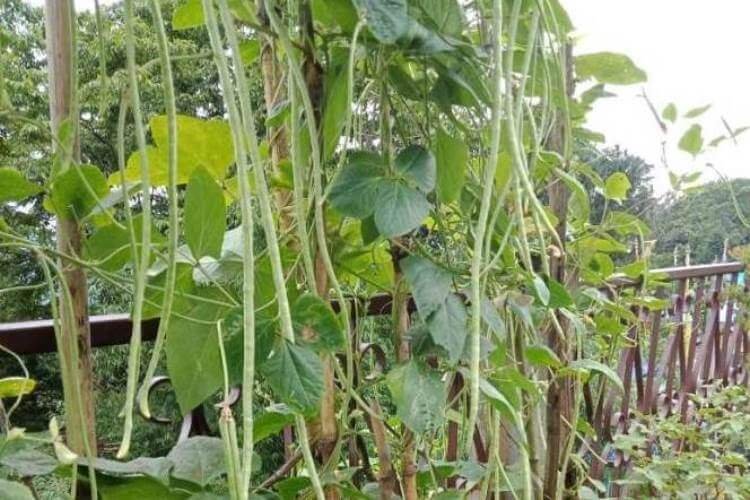Carbon footprint is the amount of carbon dioxide (CO2) released into the environment through direct or indirect human activities.
However, CO2 by itself is not evil incarnate. In fact, without this gas, we will all die.
CO2 and other greenhouse gases like methane, nitrous oxide and water vapor absorbs the sun’s energy and redirects it back to Earth. The problem occurs when there is an increase in the levels of these gases. Then they trap additional heat which can result in the melting of polar ice, rise in water levels, flooding.
This increase in greenhouse gases are a consequence of burning fossil fuels like coal, locomotive emissions, industrial processes and cutting down of forests.
If you and I can just make some easy-to-implement changes, we can contribute to the environment.
Steps on how to reduce carbon footprint
Here are 11 simple ways to achieve this.
1. Say no to fast fashion
Fast fashion is those extremely low-priced and trendy clothes that fulfill the need of in-season style but end up in the scrap heap after a few months. It is a major culprit in the 1.2 billion tons of greenhouse gas emissions related to textiles production every year, which is more than the combined emissions of all international flights and maritime shipping trips.
Modified cotton is widely used to meet the incredible demand for these clothes. The problem with this type of cotton is that they contain chemicals and once they make it to the landfill they become a nuisance, contaminating water, reducing biodiversity, and negatively affecting human health.
Animals too get caught in the whirlwind. In 2017, it was found that cat fur was being sold off as “faux fur” in a popular retail shop in England.
What’s the alternative if you want to bring something different to your personal style but not endorse fast fashion? Vintage garments, local handmade clothes, swapped clothes – the choices are aplenty.
Vivienne Westwood is right, “buy less, choose well, make it last.”
2. Eat local and seasonal
Stick to local produce. It’s ideal if you can grow food in your own backyard. If not, then opt for foods that are produced close to home.
When foods are shipped from outside, they take time to reach their destination and have to be constantly under a certain temperature. The refrigeration process increases carbon footprint. So does the transportation carrying the foods to their destination.
Even from a nutritional aspect, it makes sense. Foods from outside are picked early and by the time they get to you, they are not the freshest, despite what the labels say.
It is also important to eat organic foods that have not been sprayed with all sorts of pesticides and avoid processed food altogether. Processing plants contribute majorly to carbon footprint.
3. Cut down on meat consumption
Livestock eat a significant amount and release greenhouse gas methane – lots of it – to the atmosphere.
Rearing cows in places like Brazil is also quite a blow against the environment. Tracts of lands that were once the rich Amazon rainforests, among the greatest absorbers of CO2 on our planet, are now being converted for agricultural use.
Meat also contributes massively to the water scarcity problem. Nothing consumes freshwater quite like animal agriculture. It takes more than 5,000 gallons of water to produce one pound of meat!
4. Travel smart
Vehicles generate a third of all air pollution in the US.
Whenever possible, for shorter distances at least, try taking your bicycle. Unlike cars, bicycles emit zero amount of carbon. If the distance is short and you have time on your side, you may even give your legs a workout. A little cardio never harmed anyone.
Sometimes you have no choice but to ride a car to certain places. Try and carpool in such scenarios.
Carpooling does a lot to check carbon footprint.
Also, avoid flying if you can. A round-trip between Los Angeles and New York generates about 20 percent of the emissions your car does in one full year.
If it’s possible to reach your destination by car, do it! It’s a far lesser evil. When there is no choice but to fly then try economy class, the air equivalent of carpooling. You can fit in more people in less space and save a lot of fuel.
5. Reuse and recycle
Environmentalists preach this mantra more than most others. For good reason, as stats suggest.
Nearly 30 percent of greenhouse gas emissions in the US are a direct result from “provision of goods.” That is, the energy used for production, processing, transportation of goods.
If you can just bring down the use of disposable items then you would be doing the environment a huge favor. Invest in products that are sturdy and have a long shelf life. Every little piece you add to the garbage pile, you are adding to the carbon footprint. Decomposing waste in landfills produces methane in great amounts.
Also, old clothes should not necessarily be destined for the bin. You can do a lot with them creatively. They can be used for wrapping gifts, like the Japanese art of Furoshiki.
Try some easy DIY coffee body and face scrubs with leftover coffee grounds.
Old books piling up? Here’s how you can reuse them.
6. Electricity
“Vampire energy” sucks.
It sucks $19 billion in energy in the US every year. Whenever an appliance is plugged into a socket, it consumes energy, even if we are not using it. In Britain it was responsible for 8 percent of all residential consumption, as far back as 2004. In France it was 8 percent in 2008.
So, how does this affect carbon footprint? Most electricity is produced by burning fossil fuels, which releases greenhouse gases into the atmosphere.
Here, the solution is pretty straightforward – keep appliances off the socket when not in use.
Buying products with the “Energy Star” label also helps; they have much better energy efficiency. Use LEDs and CFLs in place of incandescent bulbs.
And, if you can, try out solar panels.
7. Line-dry clothes
Yes, old is gold sometimes.
Line drying is so much better for the environment. A dryer consumes five times more energy than washing clothes. Running a dryer is the same as turning on 225 light bulbs for one hour. It is one of the worst appliances to own if you want to reduce your carbon footprint.
Maybe it’s time to take a cue from the Italians, over 90 percent of whom don’t use dryers.
8. Plant a garden

Cow beans from my mother’s garden did pretty well this year. (Image)
Plants are nature’s solar panels. They take in CO2 and release oxygen.
Growing plants is an easy and an extremely effective way to reduce carbon footprint. And don’t feel hamstrung if you don’t have a vast outdoor space to work with. Balcony gardens are perfect for city people.
And try growing native plants as much as possible so as to encourage the incredible bee and other pollinating agents to visit your garden.
If you are new to gardening, you might want to start with an indoor herb garden.
Those fortunate enough to have a backyard can plant a tree. The benefits are staggering. A young tree consumes about 13 pounds of CO2 every year and an older tree 48 pounds. Think about how much one tree would contribute to the fight against carbon footprint in one human lifetime.
Also, if you are into agriculture, try more sustainable forms. For example, constant tillage can drastically bring down the quality of the soil over time, and also release greenhouse gases into the atmosphere. The alternative is regenerative agriculture.
9. Reduce water usage
We’ve all been taught in school growing up, 70 percent of the earth is covered by water. But that’s just one part of the story. Less that 4 percent is fit for human consumption. Of that amount, nearly 70 percent is trapped in polar ice and glaciers.
The reality is that we have very little to use and we don’t do a stellar job at using that very little we have.
When water is wasted, it goes back to the treatment plants where it is made fit for consumption. This process requires a massive amount of energy. The more efficiently we use our water, the less the work for treatment plants and, consequently, less dangerous emissions into the atmosphere.
We can reduce water wastage by following simple rules.
Don’t leave the tap on when not necessary.
Take quick, efficient showers.
Don’t use the flush to dispose of things – one flush use can consume up to 7 gallons of water.
You can also opt for water-efficient toilets, shower heads, dishwashers and washing machines. Same goes for low-flow shower heads that are an essential part if you are looking to establish an eco-friendly beauty routine.
Also, stay off disposable products; they consume an insane amount of water to make. The water footprint for one disposable diaper is a whooping 145 liters!
10. Do not litter
Litter is not just a menace on land. These unattended objects in beaches regularly get carried off to the seas by the tides, affecting fish and shelled life in particular.
It’s more distressing that plastic litter may be affecting lanternfish! These fish are so vast in numbers that they account for over half of the fish mass in the oceans. More importantly, they take in more CO2 than all the world’s forests combined. Lantern fish feed on carbon-rich zooplankton just below the water’s surface and deposit their poop right down to the floor away from the air we breathe.
The plastic debris floating in the oceans can break up into small pieces and resemble zooplankton, consequently affecting the lanternfish’s digestive system. We can’t afford to harm one of the greatest weapons against the expanding carbon footprint.
The sad part is, it’s not hard to not litter.
11. Support climate action organizations/live a minimalist lifestyle
Research the places you buy from.
In fact, if you see companies that are not doing enough to reduce carbon footprint then you can simply switch to those that are.
Moreover, embrace recycling. You can give to charity clothes that you are never going to wear. These days, people rent electronics, furniture, and cars. Or try minimalism instead. It is a great way to bring down carbon footprint.
Everything we do impacts the environment, in a positive or negative way. Do you have any more ideas on how to reduce your carbon footprint?

